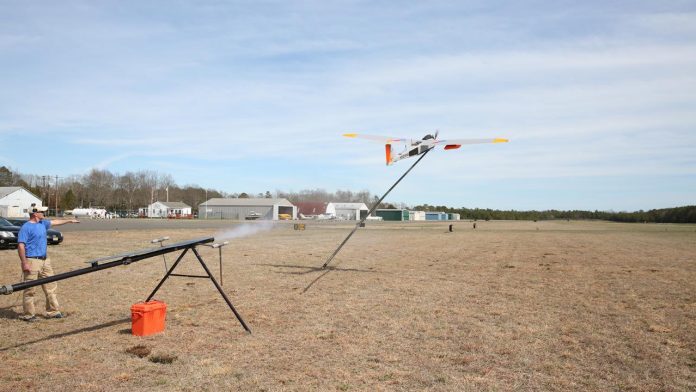Verizon mounted a cellular radio and antenna onto a drone this week to see how far coverage could extend from a “flying cell site.” The test was conducted at New Jersey’s Woodbine Municipal Airport on an aircraft piloted by American Aerospace Technologies, Inc.
Airborne LTE Operations is the name Verizon has given to its drone-based cell sites, which the company thinks could help maintain service in the event of a natural disaster or emergency. Verizon wants to make sure first responders can maintain LTE service on its network. The company said the most recent test was designed to simulate an environment in which commercial power is knocked out indefinitely. So far the company has not shared any results from the test.
Verizon sees three distinct use cases for drones in its network. One is emergency preparedness, which is the reason the company chose a long-endurance plane for the New Jersey test.
Another use case is cell tower inspection, which is already underway today. There are a number of drone service providers providing photographs and 3D images of cell towers to wireless carriers. Some are even experimenting with drones with robotic arms that can actually perform work on the towers.
The third use for drones in the Verizon network is site inspection, the company said. Drones can save time and money when Verizon needs to deploy a temporary or permanent cell site in an area that is difficult to access by foot or by car. Like the drones that inspect towers, drones with onboard cameras can perform the jobs previously performed by technicians.
Drones are likely to end up replacing workers on certain jobs in the wireless industry, but that doesn’t necessarily mean those jobs will disappear. Many technicians are already getting trained to use the software associated with drone imagery and to manage and interpret the large quantities of data that drones can deliver.

